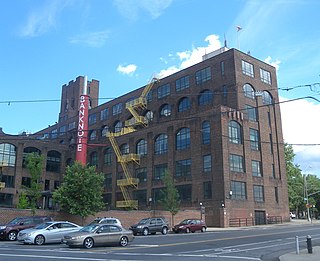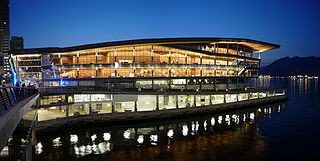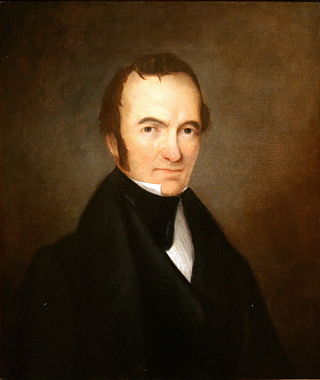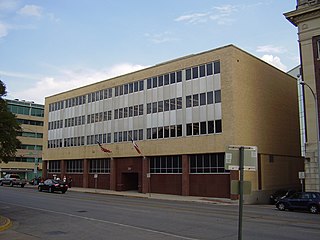
Hunts Point is a neighborhood located on a peninsula in the South Bronx of New York City. It is the location of one of the largest food distribution facilities in the world, the Hunts Point Cooperative Market. Its boundaries are the Bruckner Expressway to the west and north, the Bronx River to the east, and the East River to the south. Hunts Point Avenue is the primary street through Hunts Point.

The car-free movement is a broad, informal, emergent network of individuals and organizations, including social activists, urban planners, transportation engineers, environmentalists and others, brought together by a shared belief that large and/or high-speed motorized vehicles are too dominant in most modern cities. The goal of the movement is to create places where motorized vehicle use is greatly reduced or eliminated, by converting road and parking space to other public uses and rebuilding compact urban environments where most destinations are within easy reach by other means, including walking, cycling, public transport, personal transporters, and mobility as a service.

The Vancouver Convention Centre is a convention centre in Vancouver, British Columbia, Canada; it is one of Canada's largest convention centres. With the opening of the new West Building in 2009, it now has 43,340 square metres (466,500 sq ft) of meeting space. It is owned by the British Columbia Pavilion Corporation, a Crown corporation owned by the government of British Columbia. The Centre served as the main press centre and International Broadcast Centre for the 2010 Winter Olympics.

KB Home is a homebuilding company based in the United States, founded in 1957 as Kaufman & Broad in Detroit, Michigan. It was the first company to be traded on the NYSE as a home builder. Its headquarters are in Los Angeles, California.
The term "sustainable communities" has various definitions, but in essence refers to communities planned, built, or modified to promote sustainable living. Sustainable communities tend to focus on environmental and economic sustainability, urban infrastructure, social equity, and municipal government. The term is sometimes used synonymously with "green cities," "eco-communities," "livable cities" and "sustainable cities."

Mixed use is a type of urban development, urban design, urban planning and/or a zoning classification that blends multiple uses, such as residential, commercial, cultural, institutional, or entertainment, into one space, where those functions are to some degree physically and functionally integrated, and that provides pedestrian connections. Mixed-use development may be applied to a single building, a block or neighborhood, or in zoning policy across an entire city or other administrative unit. These projects may be completed by a private developer, (quasi-) governmental agency, or a combination thereof. A mixed-use development may be a new construction, reuse of an existing building or brownfield site, or a combination.
In the United States, a colonia is a type of unincorporated, low-income, slum area located along the Mexico–United States border region that emerged with the advent of shanty towns. These colonias consist of peri-urban subdivisions of substandard housing lacking in basic services such as potable water, electricity, paved roads, proper drainage, and waste management. Often situated in geographically inferior locations, such as former agricultural floodplains, colonias suffer from associated issues like flooding. Furthermore, urbanization practices have amplified the issues, such as when developers strip topsoil from the ground in order to subdivide land, the resulting plains become breeding grounds for mosquitoes and disease. Traditional homeownership financing methods are rare amongst colonias residents, and therefore these areas consist of ramshackle housing units built incrementally with found material on expanses of undeveloped land. Colonias have a predominant Latino population where 85 percent of those Latinos under the age of 18 are United States citizens. The U.S. has viewed border communities as a place of lawlessness, poverty, backwardness, and ethnic difference.

After declaring its independence from Mexico in March, 1836, the Republic of Texas had numerous locations as its seat of government. This being seen as a problem attempts were made to select a permanent site for the capital. January, 1839, with Mirabeau B. Lamar as the newly elected president, a site selection commission of five commissioners was formed. Edward Burleson had surveyed the planned townsite of Waterloo, near the mouth of Shoal Creek on the Colorado River, in 1838; it was incorporated January 1839. By April of that year the site selection commission had selected Waterloo to be the new capital. A bill previously passed by Congress in May, 1838, specified that any site selected as the new capital would be named Austin, after the late Stephen F. Austin; hence Waterloo upon selection as the capital was renamed Austin. The first lots in Austin went on sale August 1839.

The Drag is a nickname for a portion of Guadalupe Street that runs along the western edge of the University of Texas campus in Austin, Texas.

In urban planning, walkability is the accessibility of amenities by foot. It is based on the idea that urban spaces should be more than just transport corridors designed for maximum vehicle throughput. Instead, it should be relatively complete livable spaces that serve a variety of uses, users, and transportation modes and reduce the need for cars for travel.

The Texas Department of Housing and Community Affairs (TDHCA) is the state's lead agency responsible for homeownership, affordable rental housing, community and energy assistance programs, and colonia activities serving primarily low income Texans. The Manufactured Housing Division of TDHCA regulates the manufactured housing industry in Texas. The Department annually administers more than $400 million through for-profit, nonprofit, and local government partnerships to deliver local housing and community-based opportunities and assistance to Texans in need. The department is headquartered at 221 East 11th Street in Austin.

American Campus Communities, Inc. (ACC) is the largest developer, owner and manager of student housing communities in the United States. It is headquartered in Bee Cave, Texas, with an Austin postal address.

In the United States, subsidized housing is administered by federal, state and local agencies to provide subsidized rental assistance for low-income households. Public housing is priced much below the market rate, allowing people to live in more convenient locations rather than move away from the city in search of lower rents. In most federally-funded rental assistance programs, the tenants' monthly rent is set at 30% of their household income. Now increasingly provided in a variety of settings and formats, originally public housing in the U.S. consisted primarily of one or more concentrated blocks of low-rise and/or high-rise apartment buildings. These complexes are operated by state and local housing authorities which are authorized and funded by the United States Department of Housing and Urban Development (HUD). In 2020, there were 1 million public housing units.

The tiny-house movement is an architectural and social movement that advocates for downsizing living spaces, simplifying, and essentially "living with less." According to the 2018 International Residential Code, Appendix Q Tiny Houses, a tiny house is a "dwelling unit with a maximum of 37 square metres of floor area, excluding lofts." The term "tiny house" is sometimes used interchangeably with "micro-house". While tiny housing primarily represents cheap, simple living, the movement also sells itself as a potential eco-friendly solution to the existing housing industry, as well as a feasible transitional option for individuals experiencing a lack of shelter. Some states in the U.S. consider any home under 1,000 sq. ft. to be a tiny home.
Ivory Homes is an American housing construction company, active mainly in Utah. In 2017 it was in 60th place on a list of such companies by size in the United States.
Dan Phillips was an American designer and builder from Texas. He was the founder and face of Phoenix Commotion, a construction company established in 1997. Phoenix Commotion focuses on designing Eco-friendly homes for low-income individuals and families such as struggling artists and single mothers. The company’s goals include reducing landfill burdens through the use of excess and recyclable materials; providing low-income housing through selection of cheap materials and labor; and allowing opportunities for the unemployed by training unskilled workers.
Low-impact development (LID) has been defined as "development which through its low negative environmental impact either enhances or does not significantly diminish environmental quality".

Jeff Wilson is an American academic and serial startup entrepreneur. The pseudonym Professor Dumpster is based upon his role as part of 'The Dumpster Project', an educational and minimalist living experiment that transformed a trash dumpster into a fully sustainable home. Wilson lived in the dumpster over the course of the yearlong project.

The history of African Americans in Austin dates back to 1839, when the first African American, Mahala Murchison, arrived. By the 1860s, several communities were established by freedmen that later became incorporated into the city proper. The relative share of Austin's African-American population has steadily declined since its peak in the late 20th century.

Co-living is a residential community living model that accommodates three or more biologically unrelated people living in the same dwelling unit. Generally co-living is a type of intentional community that provides shared housing for people with similar values or intentions. The co-living experience may simply include group discussions in common areas or weekly meals, although will oftentimes extend to shared workspace and collective endeavors such as living more sustainably. An increasing number of people across the world are turning to co-living in order to unlock the same benefits as other communal living models, including "comfort, affordability, and a greater sense of social belonging."















